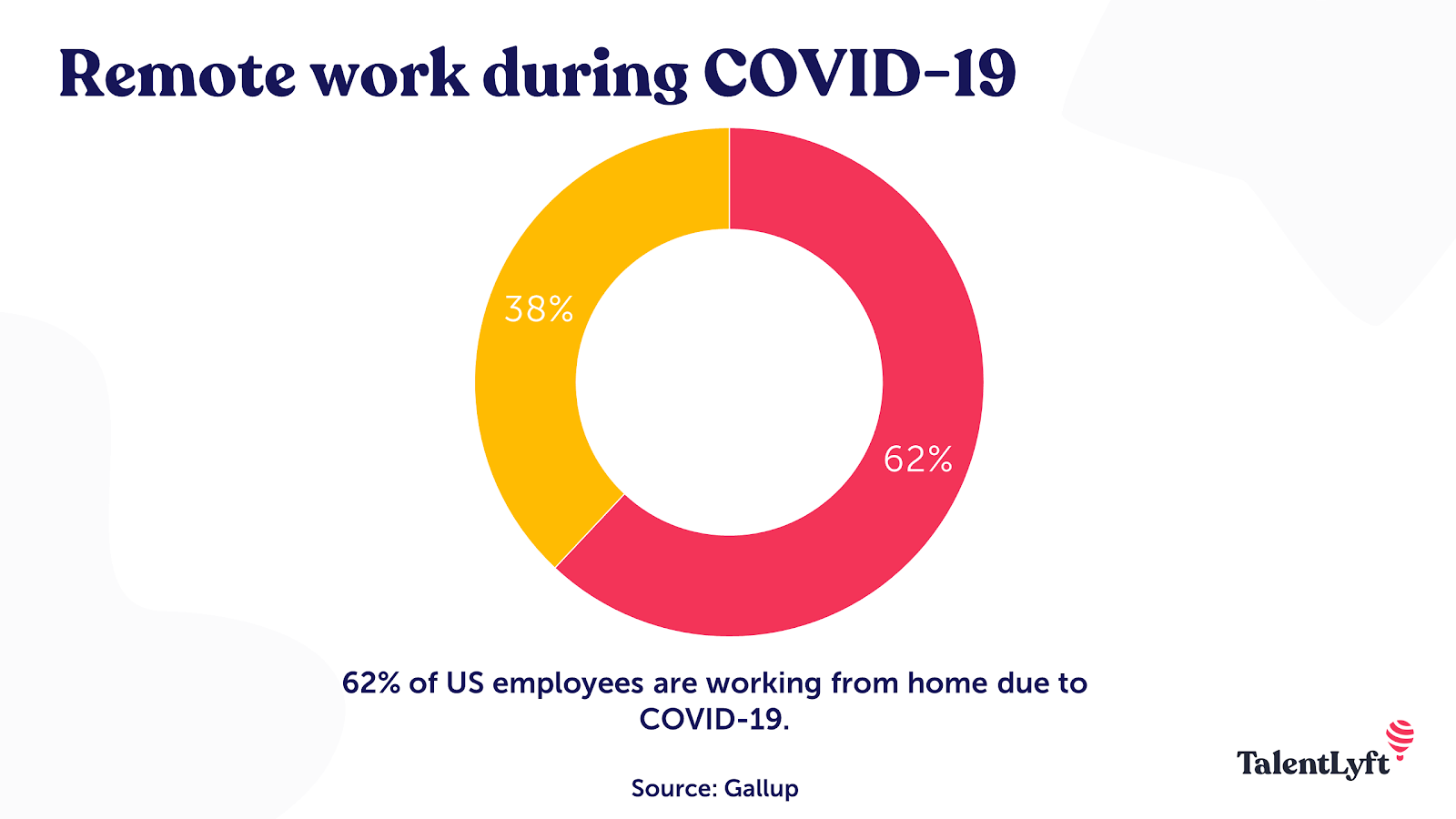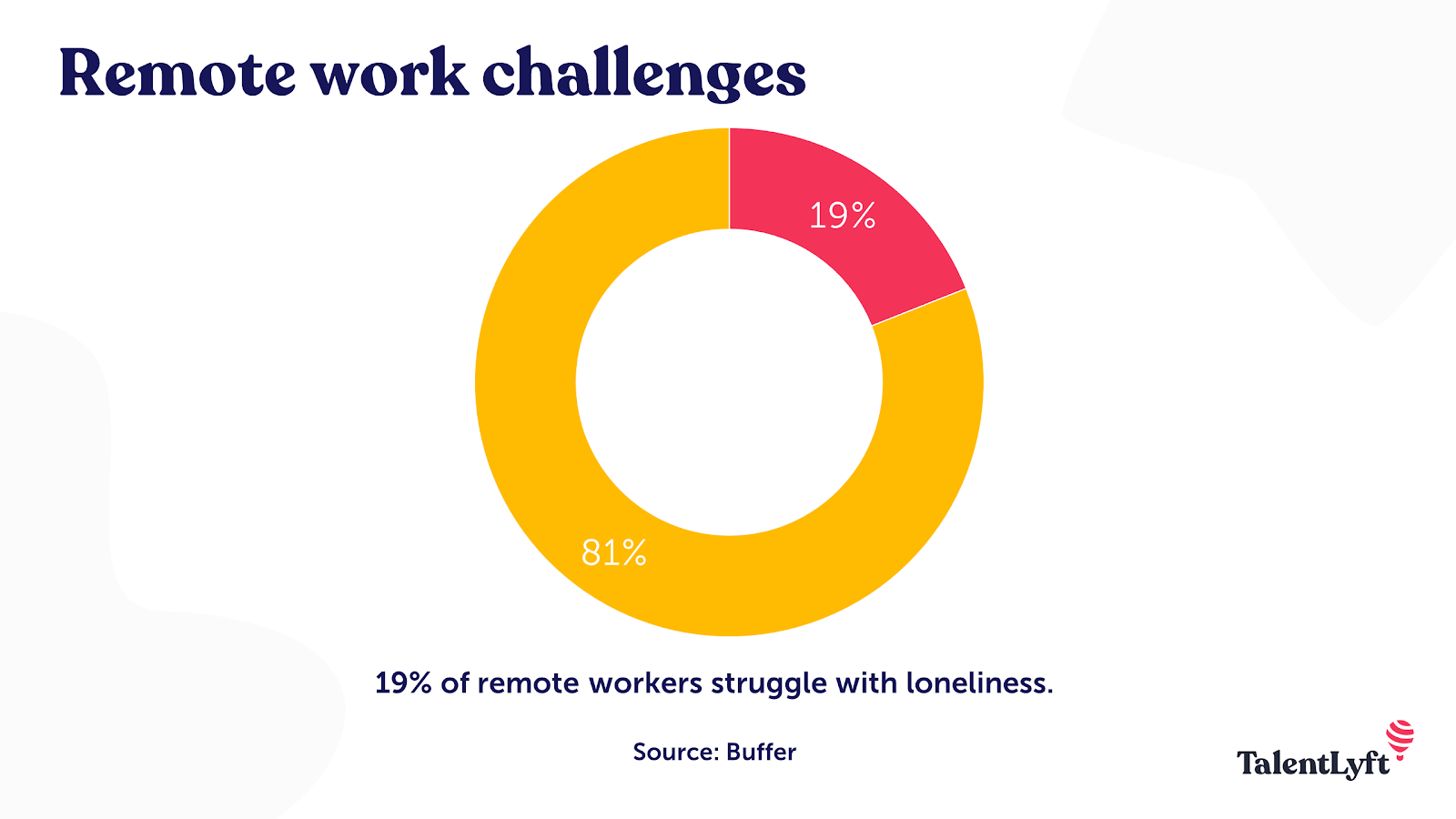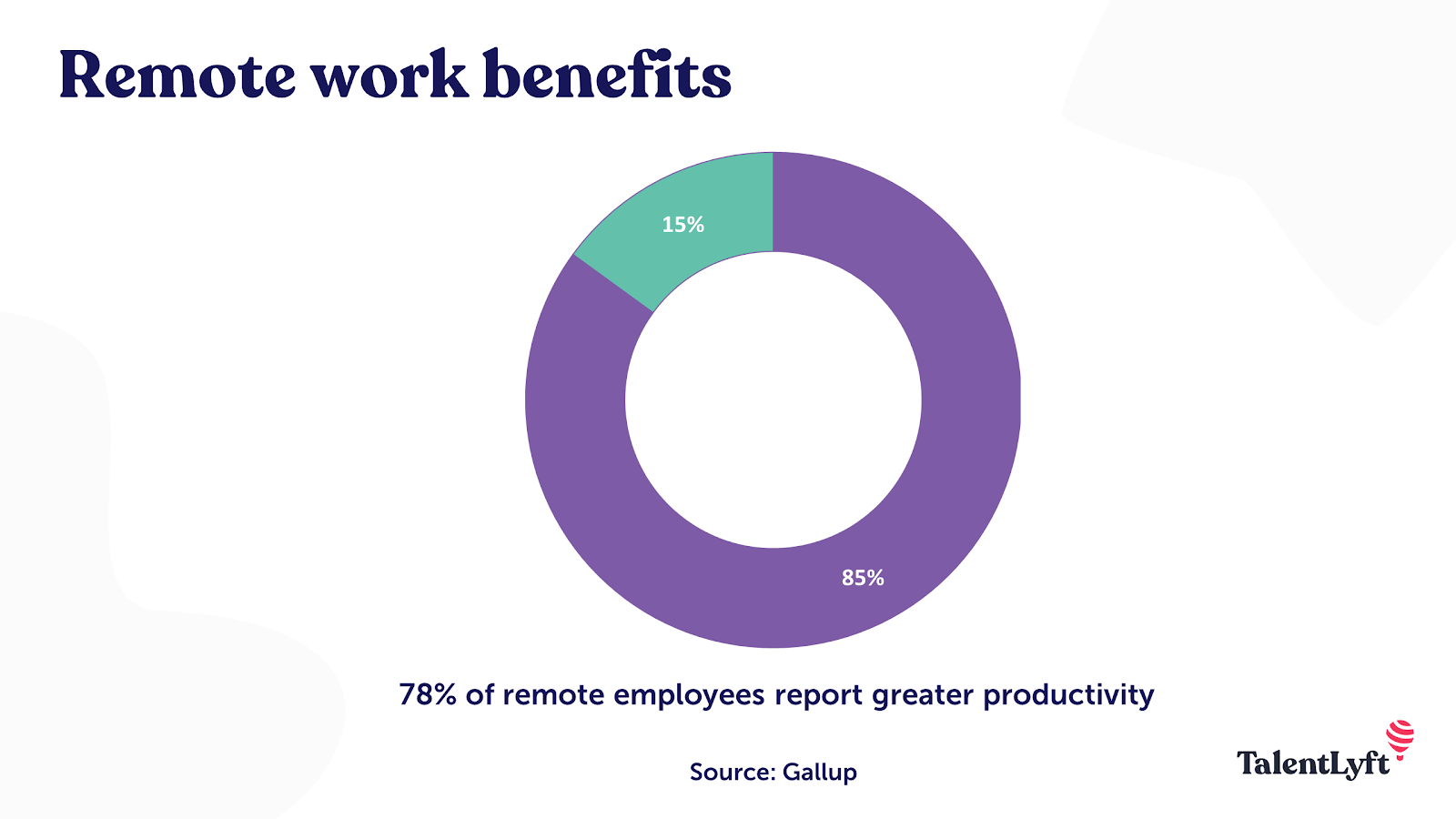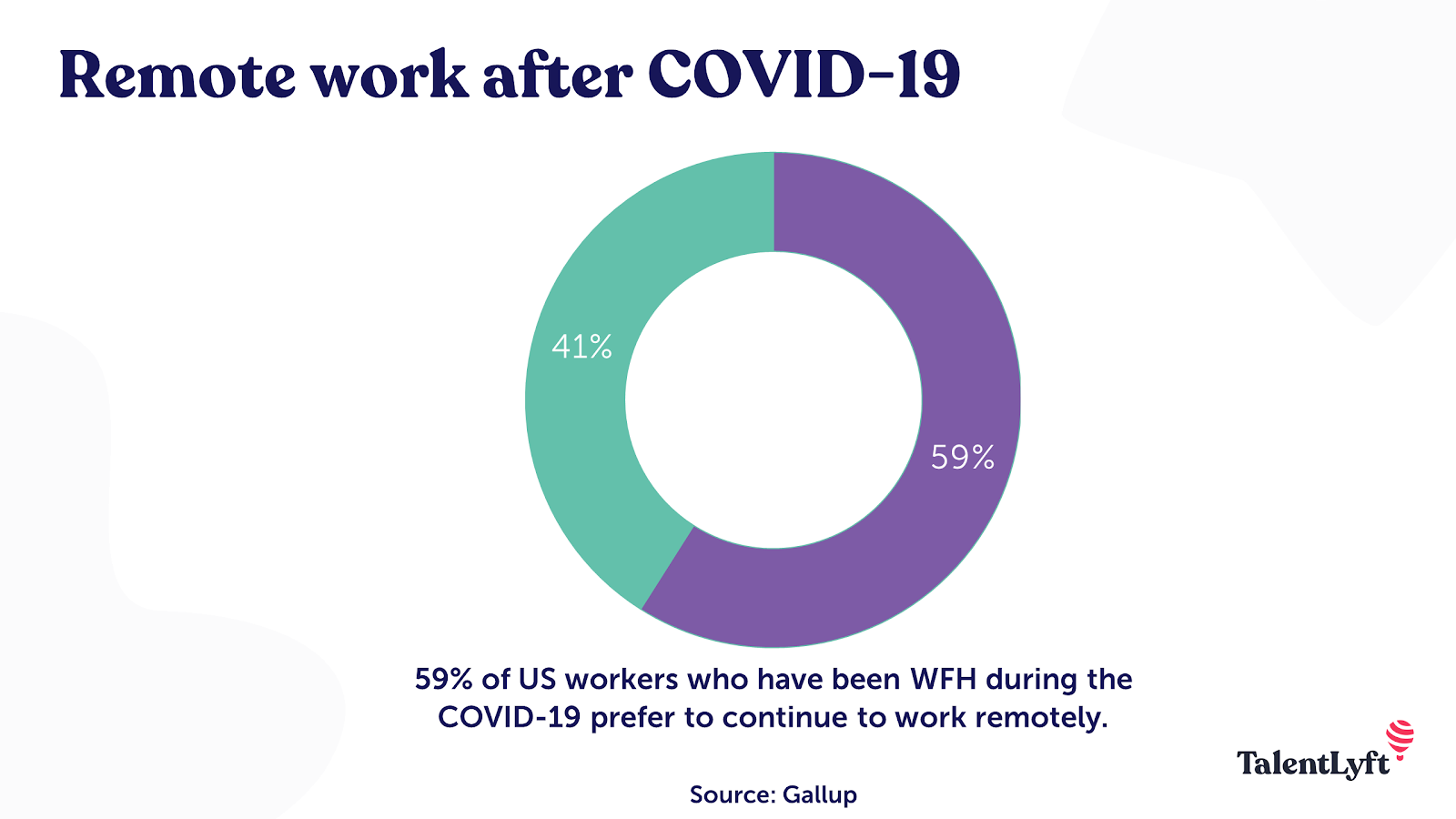![https://adoptoprod.blob.core.windows.net/article/nu08Q8pJb0OmZWb0JgS3TA.png]()
Remote work in 2020: A global trends due to COVID-19
Remote work is fast becoming the new model for businesses - even more so due to the current pandemic.
The remote working trends of 2020 have changed significantly since the start of the year - which is no surprise considering the global situation.

The trends we will be seeing over the course of 2020 are set to be vastly different from what many had predicted before the global crisis hit.
By understanding these trends, companies will be better able to work with remote teams and be as productive and efficient as possible.
Top 5 remote work trends in 2020
Here are the top 5 remote work trends that will change the way we work in 2020:

WFH trend #1: IT and security
Remote work has major advantages but it can only be made possible with strict security measures in place. There is an increased risk for getting computer viruses or being hacked if precautions aren’t taken - this puts a great deal of pressure on the IT team.
Cyber threats can negatively affect workflow. Servers and systems will have to be shut down and cleaned so staff can use them again safely. This means halting work in the short term - perhaps for a day, if not more - which could result in a loss in revenue.
But in extreme cases, a virus attack could lead to a data breach, or client information being hacked - the effect on revenue and brand goodwill could be disastrous. IT needs to have systems in place to protect in-house computers and servers.
That isn’t all - IT will also need to ensure that remote workers have protection available for their home laptops and when they access websites via mobile apps. A few precautions IT must implement include boosting security for business servers - especially when they are being accessed from multiple locations during the crisis and beyond.
Teams must also regularly change passwords - and keep a note of them - as well as update their antivirus software. In a number of companies, IT has control over password management, but it is best for everyone to have a regular update schedule.
To maintain efficient remote working protocols, cybersecurity needs to be prioritized so that teams can work from home and more remote workers can be brought on board.
WFH trend #2: More remote communication
The move towards remote working has resulted in changes in the way companies communicate with their employees. Emails may have been the primary form of communication a handful of years ago but they are more likely to slow down workflow in 2020.
The back and forth of emails simply cannot keep up with the demand for instant interaction now needed by businesses. For remote team communication to be effective, companies need to change the way they engage not only with internal staff but also with external parties.
This is particularly important considering how many companies are employing remote workers from different time zones than their brick and mortar outlets. Video calls are becoming the most popular method for businesses to stay in touch - not only for internal staff to communicate but to keep lines open with external parties.
WFH trend #3: Increased transparency
There has been a strong call for transparency from businesses across the field over the past few years. With recent findings of major corporations selling sensitive information about customers to third parties, transparency has become more essential in the running of businesses.
When you add remote work into the mix, transparency takes on a deeper meaning. It is important for companies to be as open as possible in their interactions with and expectations of remote workers.
This means holding thorough onboarding sessions, regular briefings, meetings, designing instruction manuals, and fostering a sense of community within and without the office space.
Remote teams should feel comfortable enough to ask questions and get clarifications - which will help them work more efficiently. They should also be allowed to voice their opinions about whether a certain method or software is working or not.
Transparency works both ways, however. Remote workers should be encouraged to share updates on the projects they are working on, as well as what roadblocks they may be facing.
WFH trend #4: Remote socializing
With staff working from home - many for the first time in their careers - feelings of isolation can increase. 19% of remote workers already struggle with loneliness. Coupled with the anxiety caused by the coronavirus, these feelings of isolation can be detrimental to mental and physical health, and impact workflow in the long run.

Human contact is necessary for people to feel connected to their company, colleagues, and the world outside. Especially during this self-isolation period when contact with others isn’t just restricted but mandated against, corporations need to make it easier for employees to stay in touch.
There are a number of ways to do this. Holding regular video meetings is a positive way to keep everyone connected - encourage everyone to turn on their videos so they can see each other and be seen.
After-work socialization activities should become the norm, as well. Game nights, dance-offs, and movie nights can be held online through websites, and video sessions. Organizations can use a poster maker online to make fun event invitations.
These are necessary for allowing employees to bond beyond the work environment. When using team collaboration tools like Slack, managers need to create specific channels for employees to have general conversations. These channels help to simulate the water-cooler experience where staff can chat about topics of interest that aren’t connected to work.
Loneliness can be very detrimental to the way people work and live - and has long-lasting effects on the person suffering from it and their families. Organizations need to mitigate this issue - not just during the pandemic period but also in the future, were they to continue with remote working policies.
WFH trend #5: Flexibility in working
Remote workers are no longer a distinct group of employees around the world - due to the current pandemic, in-house employees and freelance writers are also working from home. The shift in working conditions has led to businesses becoming more understanding of their employees’ situations.
With everyone staying indoors during the lockdown, employees are trying to manage work, children, parents, and households at the same time. This means that not all remote workers are able to work the exact same hours as they would have within the office.
During video calls, children often enter the room or ask for their parents’ attention - all of which people need to take into their stride. The current situation will also lead to more flexibility for remote workers who don’t work in-house at all - allowing them to take breaks during the day while still being productive.
Remote work tools trending right now
With more remote workers joining the workforce, companies are beginning to shift functionality online - effectively creating a digital workplace. Businesses need to go omnichannel by using a number of remote team tools, not only to facilitate teamwork but also to engage with clients and customers.
According to Wandera, connections to remote tools increased by over 150% in the period between February and April 2020. Some of the tools that businesses have been using include the following categories:

WFH tool #1: Team chat tools
Keeping in contact with employees when they aren’t just desks away from each other has been the biggest challenge arising from this pandemic. While email is still an option for communication- and is still a handy tool for external communications - it doesn’t give the instantaneous connection that chat tools offer.
Using software like Slack, or similar alternatives will ensure that companies keep the workflow on track. Chat tools also help to maintain connections between remote workers who may be located in distant time zones from the company of origin—this opens up new recruitment options, as well.
These tools will allow for regular check-ins and contact- to mitigate the feeling of loneliness that remote workers can sometimes feel. The other advantage of using team chat software is that they can simulate the water-cooler experience - channels can be added for non-work related conversations to take place.
WFH tool #2: Text messaging tools
While chat tools ensure workflow within, messaging tools help businesses explore heretofore uncharted avenues for development and growth.
By using automated text messaging tools, organizations can continue to keep in touch with customers, informing them of updates, changes, and new opportunities.
This will save time for workers who would have had to otherwise make calls and then go through a lot of back and forth.
WFH tool #3: Live chat
In the same vein as messaging tools, online chat is an excellent way for companies to engage with customers and clients from all over the world.
Setting up global customer service teams is difficult right now - the demand for updates is high while the time for onboarding has seen significant reductions.
Live chats can be implemented - without much cost to the organization - to automatically reply to customer queries. When the queries become more complex, they can be handed to an agent.
WFH tool #4: Team collaboration tools
Office spaces are conducive to collaboration - employees can congregate in a conference room to work on a project. Emerging queries can be addressed with a quick chat at a desk.
That simply isn’t possible in a work-from-home environment - especially when there are no options for team members to meet up with each other.
In such a situation, using team collaboration tools becomes imperative. Such software makes it easier to assign roles and tasks to team members and get real-time feedback.
WFH tool #5: Online documents
While a number of organizations have been using offline document-sharing options, online documents are definitely the way forward.
In the current environment, creating online documents that can be shared and edited live makes the writing and collating process faster and more effective.
Google docs and sheets can be easily accessed with a Google account and shared with internal and external parties.
WFH tool #6: Project management software
Project management tools allow teams to collaborate no matter where they are. This software makes it easier to divide projects among team members, assign specific tasks, and track progress and deadlines.
As a result, organizations can avoid overlaps and missed deadlines, ensuring that workflow management remains smooth.
Implementing the above software will make it easier for remote workers to do their jobs, and to keep in contact with their colleagues.

Key takeaway: Remote work is here to stay
The possibility of remote work becoming a way of life for organizations was strong even at the start of 2020. With the impact of the pandemic, it has now become a surety. According to Gartner, this shift to remote work could be permanent - 74% of companies surveyed now say they wanted to continue working remotely even post-COVID-19.
The remote working model was theoretical for a number of businesses before the crisis. Now that companies have had to implement it almost overnight, the realities of the system have become clear. It isn’t surprising why businesses would want to continue with remote working. It’s a system that has a large number of benefits - for employees and organizations.
Working from home means employees get to avoid commuting - which takes up a significant proportion of their day. That time can instead be spent on being more productive at home. Not having to go into an office also means employees get to spend more time with their families, which can have the effect of improving mental health.

For organizations, fewer in-office staff means fewer overheads and increased productivity. However, before making sweeping changes, organizations will have to seriously consider how to switch to a complete work-from-home model for their employees.
For instance, many employees are accessing their work systems through remote desktops - this may not be possible when teams go completely remotely. If remote employees still have to be equipped with laptops and accessories, that could mean that certain overheads remain in place.
Recalling the above point about increased loneliness in remote workers, it would be best for organizations to ensure that staff can meet every so often. The pandemic has, in some ways, been a trial run for transitioning to remote work. It will be interesting to see how companies augment their current systems to a permanent model.
About the author
Ronita Mohan is a content marketer at Venngage, the online infographic and design platform. Ronita regularly writes about the digital world, marketing, pop culture, and representation.






















